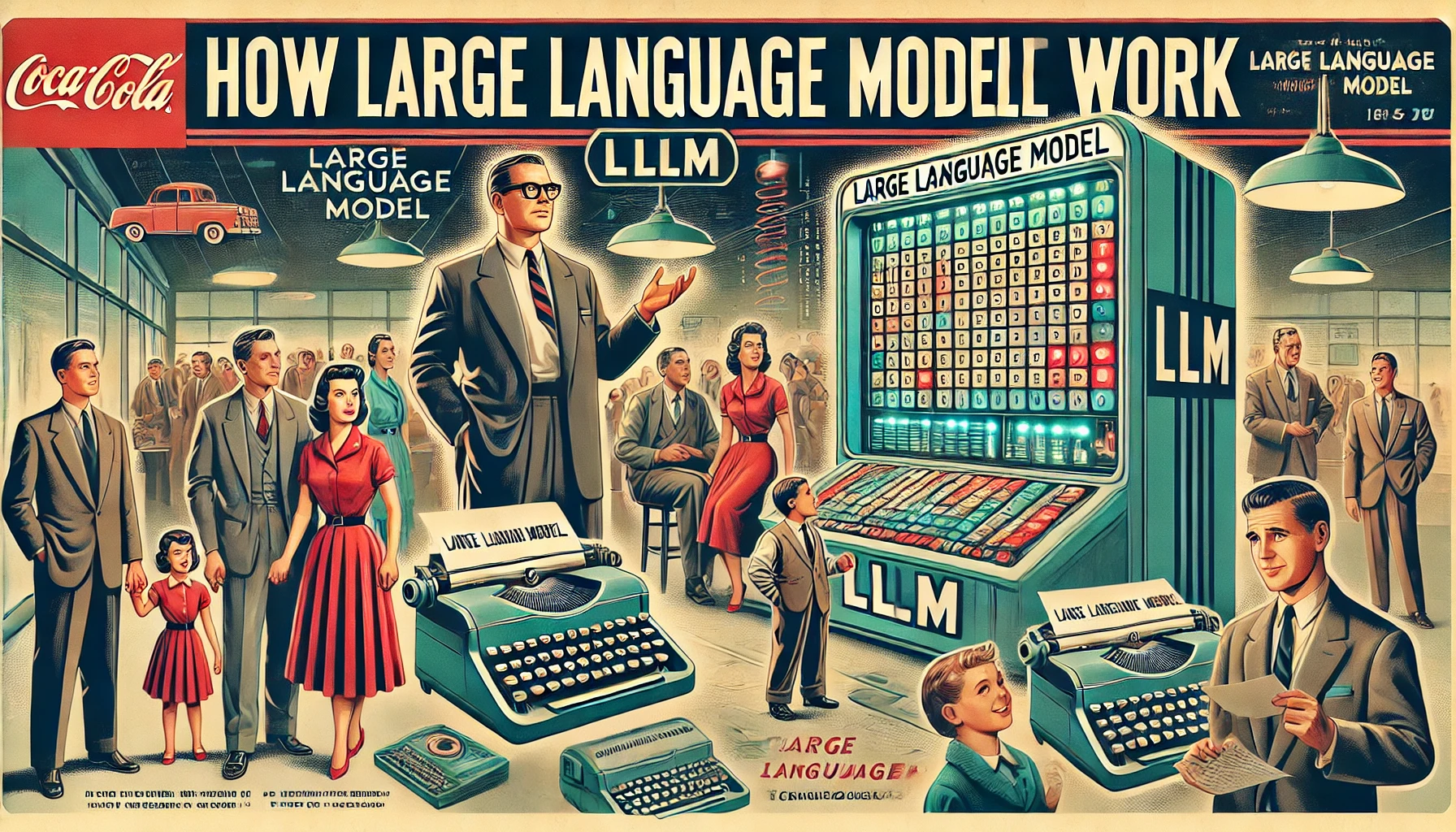
Look at the image for this story. A large language (LLM) model drew it and made a mistake. Actually, it made a few. Have you ever wondered how AI chatbots, translators, or virtual assistants seem to understand and respond in human-like ways? And why sometimes they get it wrong.
It's like magic—but grounded in a fascinating science. The technology behind these tools is called Large Language Models (LLMs), a type of artificial intelligence designed to grasp and generate language. Think of them as encyclopedic storytellers, trained to navigate the vastness of human communication. Let’s explore how they work in a way that makes sense for all of us.
What is a Large Language Model?
Imagine walking into the grandest library you've ever seen, filled with books from every culture and era. Instead of a human librarian, there's an AI that has read everything in the library—not just the books, but also magazines, blogs, tweets, and even poetry. This AI doesn’t memorize every word; instead, it learns patterns, connections, and structures in the language.
LLMs, like OpenAI's GPT models, operate just like this librarian. They don’t "know" things in the way people do but are brilliant at recognizing patterns in text data.
How Do They Work? Breaking Down the Magic
Understanding LLMs can be as simple as thinking about how humans learn.
1. The Learning Stage: Reading the World’s Library
To train an LLM, scientists feed it an immense amount of text—millions of books, articles, and more. Just like a student reading textbooks, the model studies how words fit together to form ideas. It learns relationships:
Words often used together (“coffee” and “morning”).
Grammar rules without being explicitly told.
Context from the surrounding words.
2. The Memory Trick: Predicting the Next Word
Here’s the heart of how LLMs work: prediction. Imagine playing a word game where you try to guess what comes next:
"I woke up early to watch the ____."
If you guessed "sunrise," that’s what LLMs do. By predicting the most likely word based on its training, the model constructs sentences, answers questions, or tells stories.
3. The Brain Power: Neural Networks
Think of a neural network like a web of lights, with each bulb representing a piece of information. When the model encounters a question or command, it lights up certain bulbs to process and create an answer. This system mimics, in a very abstract way, how our brains process information.
Real-World Benefits of LLMs
Why are LLMs becoming such a big deal? Here are some everyday ways they enhance our lives:
· Chatbots: Customer support that feels human.
· Translation Tools: Breaking language barriers in seconds.
· Creative Writing Assistance: Helping writers craft stories or generate ideas.
· Personalized Education: Tutoring software tailored to individual learning needs.
· Challenges and Ethical Questions
· LLMs are powerful, but they’re not perfect.
· Bias: If the training data contains stereotypes or inaccuracies, the model can reflect those.
· Misinformation: LLMs don’t fact-check; they generate plausible-sounding text.
· Energy Use: Training and running these models consume significant resources.
How LLMs Work: The Basics
LLMs are trained on vast amounts of text data from the internet, books, and other written sources. During training, they learn to predict the next word in a sentence based on the words that came before. This process doesn’t involve true "understanding"; instead, the model identifies patterns and relationships between words.
Why Hallucinations Happen
Did you spot the error in the image? There's a spelling mistake in the headline, and also just under the headline. Why do LLMs get things wrong?
- Prediction, Not Facts
- LLMs aim to generate plausible-sounding text, not necessarily correct text. They don't have a built-in fact-checking mechanism and can easily "guess" if they don’t have enough context or if the training data was incomplete or inaccurate.
- Bias in Training Data
- These models learn from what they are fed. If the training data includes errors, biases, or fictional information, the model can unknowingly reproduce those inaccuracies.
- Context Limitations
- LLMs analyze a given prompt based on statistical probabilities, but they don’t always interpret ambiguous or complex queries correctly. When faced with unfamiliar or unclear input, they may fill in the blanks with incorrect or fabricated information.
- Confusion Between Real and Imaginary
- The training data often includes both factual and fictional content. Without a robust way to differentiate, the model might treat fictional elements as factual in certain contexts.
Analogy: A Confident Storyteller
Think of an LLM like a storyteller trying to answer every question convincingly. If asked something it doesn’t know, it won’t admit ignorance—it will create an answer that sounds good, even if it’s wrong. This is why LLMs can "hallucinate" highly detailed but false information.
Conclusion: A Partner in Progress
Large Language Models are like the world’s best-trained parrots—they mimic human language with stunning precision but don’t truly "understand." Yet their potential to reshape industries and improve lives is undeniable. As we develop and use LLMs, balancing innovation with ethical responsibility will be key.
Understanding LLMs isn’t just for tech experts; it’s for anyone curious about the tools shaping our future. And now, you’re one step closer to mastering the magic of AI.
And remember - Always, always always check the final result for hallucinations!
Sources
Want to learn more: My sources are your sources (except for the confidential ones):
OpenAI Documentation: Explore OpenAI's API documentation to understand their models and tools.
AI Ethics and Machine Learning Papers
Neural Network Educational Resources:
OpenAI Cookbook: An open-source collection of examples and guides for building with the OpenAI API.
A Beginner's Guide to The OpenAI API: Hands-On Tutorial and Best Practices